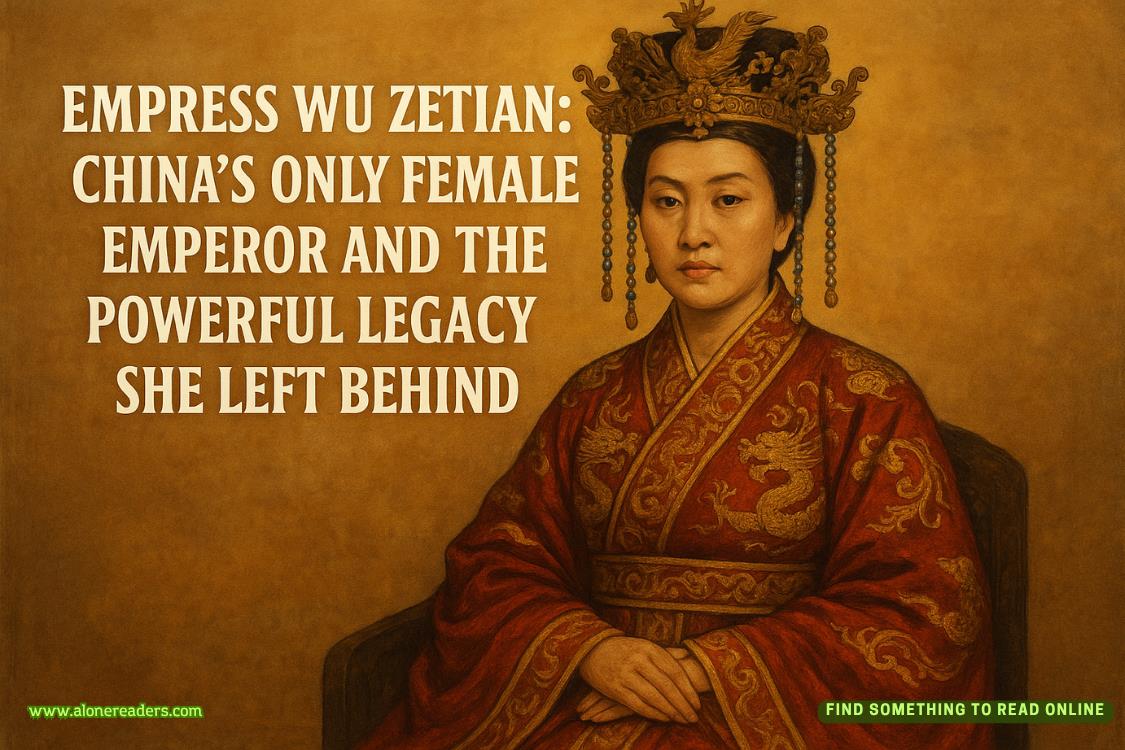Page 1 of Dragon (Dirk Pitt 10)
DENNINGS' DEMONS
August 6, 1945
Shemya Island, Alaska
The devil clutched a bomb in his left hand, a pitchfork in his right, and smirked impishly. He might have appeared menacing if it wasn't for the exaggerated eyebrows and the half-moon eyes. They gave him more of a sleepy gremlin look than the fiendish expression expected from the ruler of hell. Yet he wore the customary red suit and sprouted regulation horns and long forked tail. Oddly, the clawlike toenails of his feet were curled over a gold bar that was labeled 24 K.
In black letters above and below the circled figure on the fuselage of the B-29 bomber were the words Dennings' Demons.
The aircraft, named for its commander and crew, sat like a forlorn ghost under a sheet of rain driven southward over the Aleutian Islands by a wind from the Bering Sea. A battery of portable lights illuminated the area beneath the open belly of the plane, casting wavering shadows from the ground crew on the glistening aluminum body, Flashes of lightning added to the haunting scene, stabbing the darkness of the airfield with disturbing frequency.
Major Charles Dennings leaned against one of the twin tires of the starboard landing gear, hands shoved deep into the pockets of his leather flight jacket, and observed the activity around his aircraft. The entire area was patrolled by armed MP's and K-9 sentries. A small camera crew recorded the event. He watched with uneasy trepidation as the obese bomb was delicately winched into the modified bomb bay of the B-29. It was too large for the bomber's ground clearance and had to be hoisted out of a pit.
During his two years as one of the top bomber pilots in Europe, with over forty missions to his credit, he had never laid eyes on such a monstrosity. He saw it as a gigantic overinflated football with nonsensical boxed fins on one end. The round ballistic casing was painted a light gray, and the clamps that held it together around the middle looked like a huge zipper.
Dennings felt menaced by the thing he was to carry nearly three thousand miles. The Los Alamos scientists who assembled the bomb at the airstrip had briefed Dennings and his crew the previous afternoon. A motion picture of the Trinity test explosion was shown to the young men, who sat stunned in disbelief as they viewed the awesome detonation of a single weapon with the power to crush an entire city.
He stood there another half hour until the bomb-bay doors were swung closed. The atom bomb was armed and secure, the plane was fueled and ready for takeoff.
Dennings loved his aircraft. In the air he and the big complex machine became as one. He was the brain, it was the body, a unity he could never describe. On the ground it was another story. Exposed by the shining lights and beaten by the rain that became sleet-cold, he saw the beautiful ghostlike silver bomber as his crypt.
He shook off the morbid thought and hurried through the rain to a Quonset but for his crew's final briefing. He entered and sat down next to Captain Irv Stanton, the bombardier, a jolly round-faced man with a great walrus mustache.
On the other side of Stanton, his feet stretched out in front of him, slouched Captain Mort Stromp, Dennings' co-pilot, a complacent southerner, who moved with the agility of a three-toed sloth.
Immediately behind sat Lieutenant Joseph Arnold, the navigator, and Navy Commander Hank Byrnes, the weapons engineer, who would monitor the bomb during the flight.
The briefing led off with an intelligence officer unveiling a display board showing aerial photographs of the targets. The industrial section of Osaka was the primary target. The backup, in case of heavy cloud cover, was the historic city of Kyoto. Directional bomb runs were advised as Stanton calmly made notes.
A meteorology officer displayed weather charts and predicted light headwinds with scattered clouds over the targets. He also warned Dennings to expect turbulence over northern Japan. Just to be on the safe side, two B-29s had taken off an hour earlier to scout ahead and report visual assessments of weather over the flight route and cloud cover above the targets.
Dennings took over as polarized welder's goggles were passed around. "I won't give you a locker-room pep talk," he said, noting the relieved grins on the faces of his crew. "We've had a year of training crammed into one short month, but I know we can pull this mission off. In my humble opinion you're the best damned flight crew in the Air Force. If we all do our jobs, we may well end the war."
Then he nodded at the base chaplain, who offered a prayer for a safe and successful flight.
As the men filed out toward the waiting B-29, Dennings was approached by General Harold Morrison, special deputy to General Leslie Groves, head of the Manhattan bomb project.
Morrison studied Dennings for a moment. The pilot's eyes showed a weariness around the edges, but they glowed with anticipation. The general held out his hand. "Good luck, Major."
"Thank you, sir. We'll get the job done."
"I don't doubt it for a second," said Morrison, forcing a confident expression. He waited for Dennings to reply, but the pilot had gone silent.
After a few awkward moments, Dennings asked, "Why us
General?"
Morrison's smile was barely visible. "You want to back out
"No, my crew and I will see it through. But why us?" he repeated. "Excuse me for saying, sir, but I can't believe we're the only flight crew in the Air Force you'd trust to fly an atomic bomb across the Pacific, drop it in the middle of Japan, and then land at Okinawa with little more than fumes in the fuel tanks."
"It's best you know only what you've been told."
Dennings read foreboding in the older man's eyes and voice. " `Mother's Breath.' " He repeated the words slowly, without tone, as one would repeat the name of some unspeakable terror. "What warped soul came up with such a cockamamie code name for the bomb?"
Morrison made a resigned shrug. "I believe it was the President."















